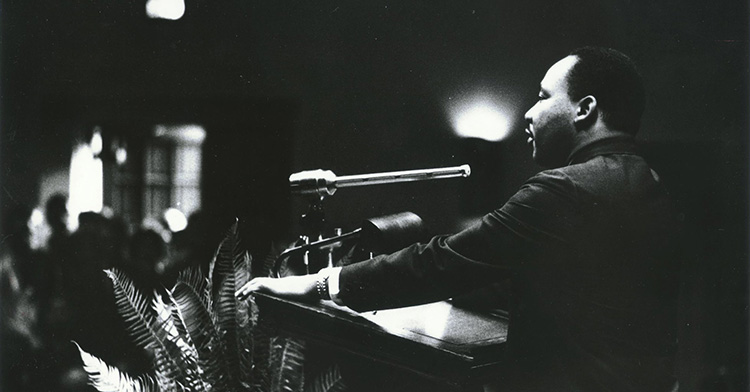My two boys are in awe of the Olympic snowboarders’ halfpipe event. On the inside of a half-cylinder-shaped snow tube or ramp, the athletes perform routines of acrobatic jumps, twists and tricks while moving from one side of the halfpipe to the other. They are most creative while they are in the air. In order to perform, the snowboarders leave terra firma, letting go of what is safe and predictable, and complete their stunts in a liminal space, between takeoff and landing.
Like these snowboarders, Christian leaders, in order to be fully creative, must let go of what is safe and predictable and spend some time in a liminal space. And during this time, they need to be supported, both institutionally and personally.
Anthropologist Victor Turner describes liminality as the time and space around rites of passage, such as the coming-of-age period when a young person is no longer the child she once was but not yet the adult she will soon be. The word derives from the Latin term for “threshold,” signifying a state of being on the doorstep, not quite in or out. It is a crucial, formative period that determines the kind of adult the young person will grow to be.
When and where are our formative “thresholds”? And how do we carve out and preserve these times and spaces where we are often at our most creative?
Facilitator Viv McWaters writes that in order to create something new, we must, like a trapeze artist, first let go of what we are currently clutching. The liminal space is the space between the letting go and the grabbing on, she explains. Blind Bartimaeus must let go of his cloak, giving up all he has, before he can embrace the love and healing that Jesus offers him (Mark 10:46-52). We may need to let go of habits, old stories, a culture, a pattern of behavior, an expectation or an attitude.
Old habits are safe and predictable. And most of us don’t want to let go of the trapeze bar, unless we have some sense of what we’re grabbing onto next. But when we let go and allow ourselves to experience the in-between, we are open and unallied in a way that gives us the perspective we need to be fully creative. This is true whether we are building something entirely new or adapting an existing program, community or way of being.
One simple way of practicing this letting go is to sit and think. A church historian tells his seminary students to go outside and sit under a tree and think for an hour about an assigned issue. This practice is excruciating for a texting generation. But in this liminal, in-between state, students who manage to stay awake find a rare blessing: the space to think, solve problems or receive insights.
A second key to finding and preserving liminal space involves institutional support of the in-between. Sabbatical leaves are a practical example. On sabbatical, pastors and scholars have a chance to process what they’ve done in the past and clear a space for what they will do in the future. When we are always required to produce, we often lose the needed hours to take stock of where we are and where we might go. We lose the opportunity to brainstorm freely, without a goal or objective in mind. We do our colleagues on sabbatical a disservice when we expect only tangible productivity.
Understanding the need to create such spaces for new faculty in particular, a former dean told me how he used to make sure his first-year faculty did not serve on committees or have other institutional responsibilities besides teaching. He respected and preserved their need to have a liminal year where they found their footing and voice in a new work environment. He considered it his job as a leader to do this “heavy lifting” for his young faculty.
In a similar attempt to create a liminal “ethos of interaction” the faculty members of one divinity school covenanted to set aside a half-hour for exercise and a half-hour for quiet time each day for an academic year. They held each other accountable for these liminal periods at faculty meetings. Even more striking, they agreed not to worry if some work did not get done as a result. They realized that this was important time to let new ideas and connections emerge. The faculty’s mutual support was a crucial part of their ability to sustain the experiment.
One Methodist clergy friend experienced this liminal period between appointments. During the weeks she was waiting for her new appointment, she took the time to establish new habits and life-giving commitments. Instead of giving in to anxiety, my friend used the time to create a new rule of life for her spiritual discipline before entering her new parish.
For most of us, going on sabbatical is a rare opportunity -- and the ability to do snowboarding stunts is even rarer -- yet such liminal spaces are not luxuries. They are in fact necessities, because they are at the heart of our faith. Sam Wells, dean of Duke University Chapel, describes what he calls the comma between the cross and the resurrection. “To be a Christian,” he explains, “is to dwell in that comma.”













